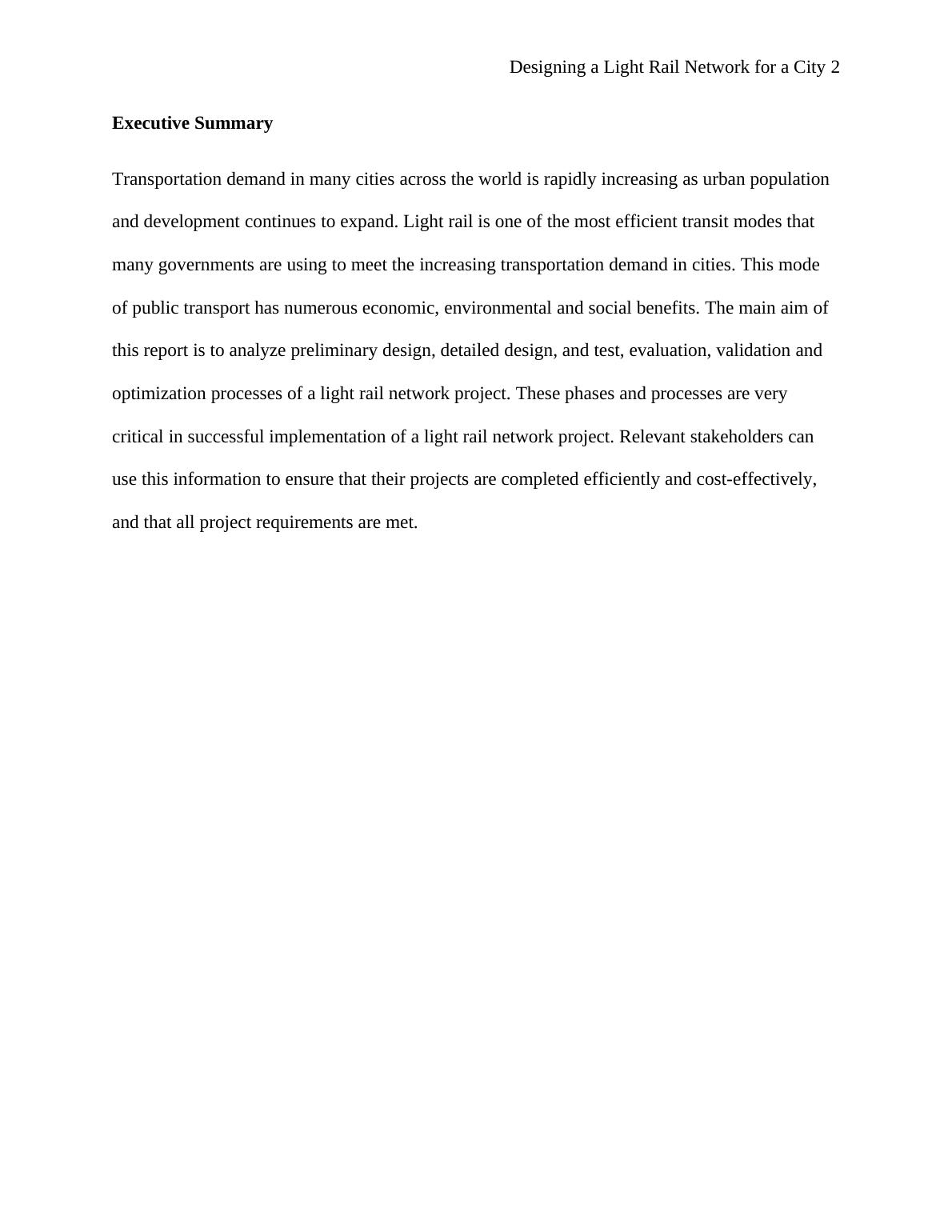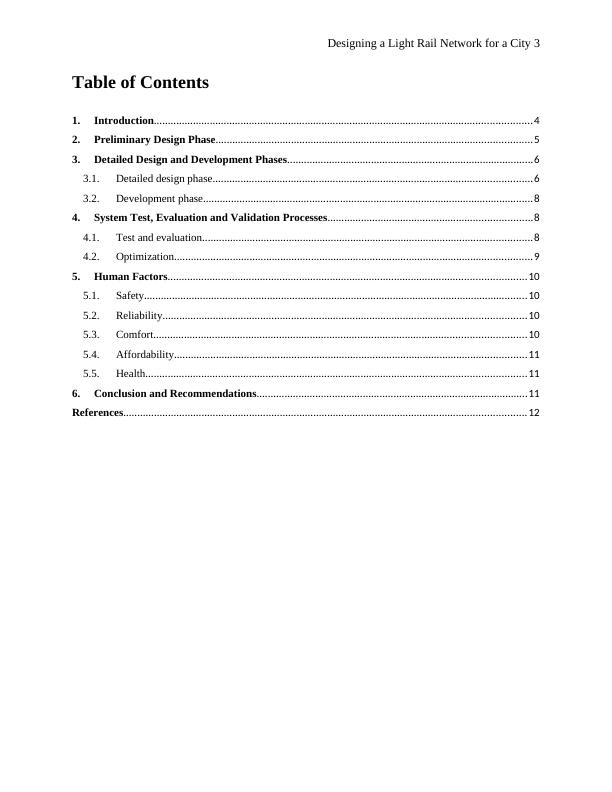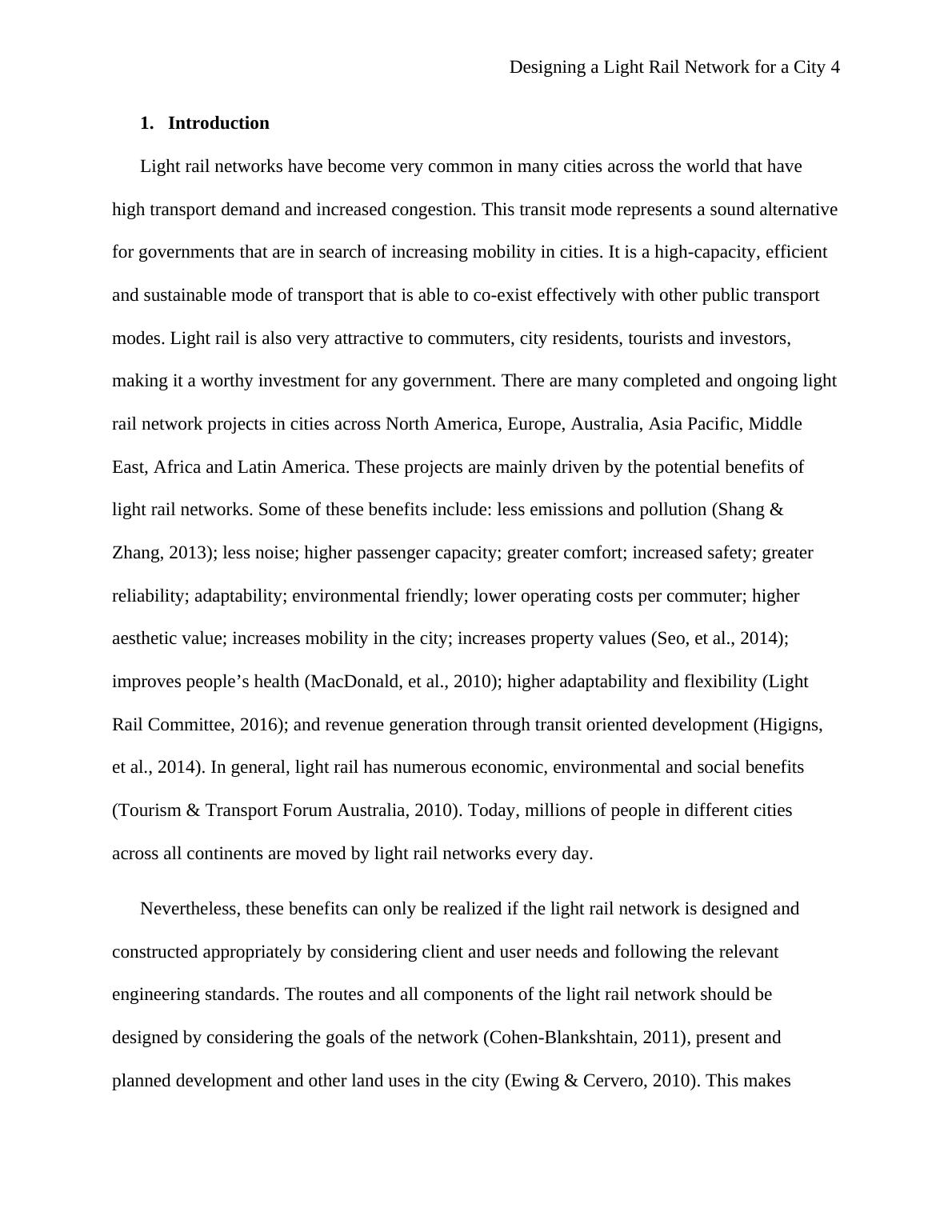Designing a Light Rail Network for a City 14 DESIGNING A LIGHT RAIL NETWORK FOR A CITY
Added on 2020-04-07
14 Pages3406 Words136 Views
Designing a Light Rail Network for a City 1DESIGNING A LIGHT RAIL NETWORK FOR A CITYNameCourseProfessorUniversityCity/stateDate

Designing a Light Rail Network for a City 2Executive SummaryTransportation demand in many cities across the world is rapidly increasing as urban population and development continues to expand. Light rail is one of the most efficient transit modes that many governments are using to meet the increasing transportation demand in cities. This mode of public transport has numerous economic, environmental and social benefits. The main aim of this report is to analyze preliminary design, detailed design, and test, evaluation, validation and optimization processes of a light rail network project. These phases and processes are very critical in successful implementation of a light rail network project. Relevant stakeholders can use this information to ensure that their projects are completed efficiently and cost-effectively, and that all project requirements are met.

Designing a Light Rail Network for a City 3Table of Contents1.Introduction.......................................................................................................................................42.Preliminary Design Phase.................................................................................................................53.Detailed Design and Development Phases........................................................................................63.1.Detailed design phase..................................................................................................................63.2.Development phase......................................................................................................................84.System Test, Evaluation and Validation Processes.........................................................................84.1.Test and evaluation......................................................................................................................84.2.Optimization................................................................................................................................95.Human Factors................................................................................................................................105.1.Safety.........................................................................................................................................105.2.Reliability..................................................................................................................................105.3.Comfort.....................................................................................................................................105.4.Affordability..............................................................................................................................115.5.Health........................................................................................................................................116.Conclusion and Recommendations.................................................................................................11References................................................................................................................................................12

Designing a Light Rail Network for a City 41.IntroductionLight rail networks have become very common in many cities across the world that have high transport demand and increased congestion. This transit mode represents a sound alternativefor governments that are in search of increasing mobility in cities. It is a high-capacity, efficient and sustainable mode of transport that is able to co-exist effectively with other public transport modes. Light rail is also very attractive to commuters, city residents, tourists and investors, making it a worthy investment for any government. There are many completed and ongoing lightrail network projects in cities across North America, Europe, Australia, Asia Pacific, Middle East, Africa and Latin America. These projects are mainly driven by the potential benefits of light rail networks. Some of these benefits include: less emissions and pollution[ CITATION Sha131\l 1033 ]; less noise; higher passenger capacity; greater comfort; increased safety; greater reliability; adaptability; environmental friendly; lower operating costs per commuter; higher aesthetic value; increases mobility in the city; increases property values[ CITATION Seo14 \l 1033 ];improves people’s health[CITATION Mac10 \l 1033 ]; higher adaptability and flexibility[ CITATION Lig16 \l 1033 ]; and revenue generation through transit oriented development[ CITATION Hig141 \l 1033 ]. In general, light rail has numerous economic, environmental and social benefits[ CITATION Tou10 \l 1033 ]. Today, millions of people in different cities across all continents are moved by light rail networks every day. Nevertheless, these benefits can only be realized if the light rail network is designed and constructed appropriately by considering client and user needs and following the relevant engineering standards. The routes and all components of the light rail network should be designed by considering the goals of the network[ CITATION Coh11 \l 1033 ], present and planned development and other land uses in the city[ CITATION Ewi10 \l 1033 ]. This makes design and

End of preview
Want to access all the pages? Upload your documents or become a member.
Related Documents
Light Rail in Manchester City | Assignmentlg...
|14
|3645
|30
LIGHT RAIL TRANSIT FOR THE CITY OF BRISBANElg...
|13
|3365
|212
Light Rail Network - PDFlg...
|15
|3436
|111
System Engineering and Analysis for Development of the Network of Light Rail Transitlg...
|14
|3689
|491
Report on Designing of Light Railway Networklg...
|15
|3858
|51
The Process of Light Rail Network Design and Developmentlg...
|17
|3785
|102
